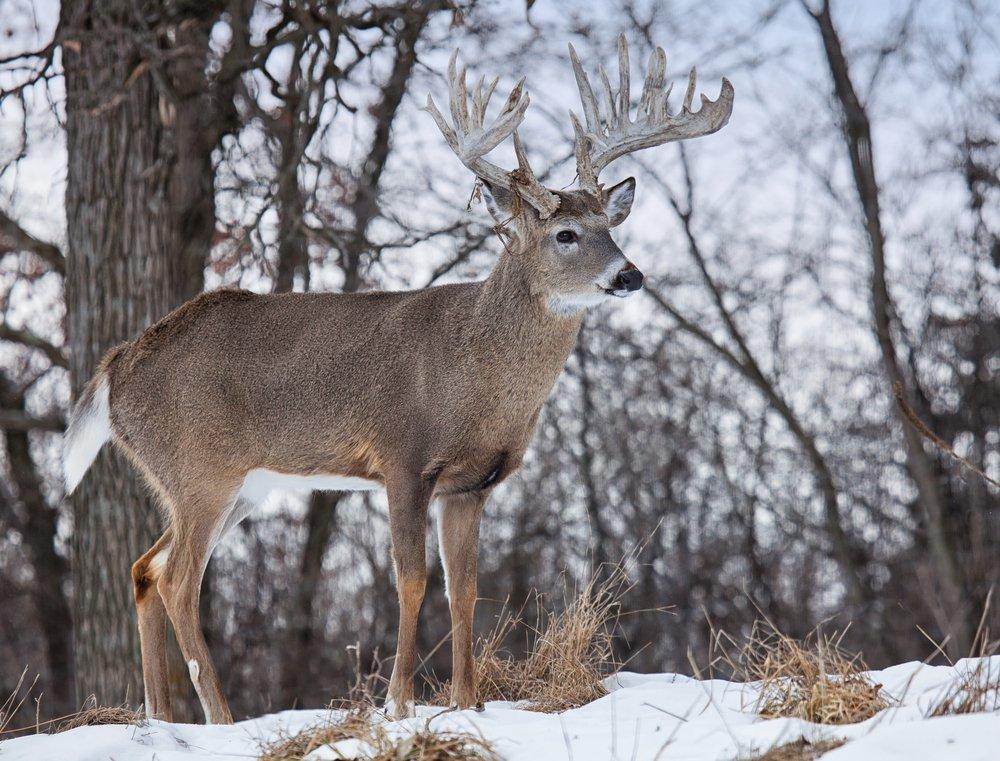Classic hunting advice for the final days of deer season
Deer season is already over for some. It's nearing its end for others. If you're among the latter, here are 10 different tidbits of information that might help you seal the deal in the final days of deer season.
1. Faster (and Cheaper) Sighting In
Want a quicker method of sighting in and fine-tuning your scope? You'll need a solid bench and either a commercial gun vice or one you made yourself (a heavy cardboard box with Vs cut into it to hold your rifle steady will also work). From a solid rest at 50 yards, fire three careful shots at your target. Mark where the group strikes on the target with a magic marker, making a new "bulls-eye" there. Place your rifle in the vice and position it so the crosshairs are on the original target bulls-eye. Now, making sure the rifle doesn't move, look through the scope and adjust the crosshairs until they are at the center of the three-shot group bulls-eye you made. Fine-tune as needed, but this will save you time and ammo.
2. Rifle Care in the Cold
When hunting in sub-freezing temperatures for more than a day, don't bring your rifle or shotgun inside where the temperatures are above freezing unless you plan on thoroughly cleaning it that same night. Condensation caused by the change in temperatures will do more harm than leaving it exposed to freezing temps. It will also avoid having the scope on your rifle or slug gun fog over.
Don't Miss: 10 Best Camo Hunting Rifles for 2019
3. Tending to Your Whiskers
If you're one of the many bowhunters who use the Whisker Biscuit, you know a freezing rain or wet snow can sometimes cause the biscuit's fibers to freeze together. A simple solution is to carry a 6-inch piece of quarter-inch diameter dowel and when your biscuit starts gathering ice, simply remove your arrow and use the dowel in circular motions to break loose and remove the ice/snow that's accumulated on the whisker fibers near the center hole. Also, make sure your arrow shaft isn't coated over before re-nocking.
4. Buck-Tracking Clues
With a tracking snow, determining fresh buck tracks from those of a doe is something many hunters never master, and even expert trackers sometimes get fooled by a big doe track. A good start is studying the gate. A buck's feet produce a drag mark when it walks, even in shallow snow, while the doe lifts her feet clear of the surface and leaves just the track of the hoof and no drag mark. Also, an adult buck's hooves tend to point outward while a doe's are straight ahead. Another clue is when a deer urinates; a doe leaves a neat mark in the snow while a buck dribbles over a larger area.
Don't Miss: How to Track a Buck in the Snow
5. Corn Husk Your Late Buck
Large cornfields that are still standing late in the season can be deer magnets. Deer will often bed right in the corn or near the field edges and approach the field from downwind in late afternoon. So stand placement is critical. If the cornfields aren't too large, a couple of hunters stillhunting through them and moving into the wind while two hunters stillhunt along each edge will also work. Everyone should wear at least a hunter-orange vest.
6. Lowdown On Buck Hideouts
In most parts of the country, deer will gradually keep moving to progressively lower elevations in their home range as winter approaches and arrives. When hunting the late season, concentrate your hunting in the lower elevation areas that offer good habitat.
Don't Miss: 15 Places Big Bucks Bed That Deer Hunters Should Hunt
7. Late and Great One-Hour Stands
When hunting deer late in the season, it's wise to forgo sitting on stand too long. Confine your watches to the first and last hour of the day and maybe an hour at midday. Deer tend to move less and reduce their range when the cold weather arrives. When not on stand, stillhunt very slowly into the wind and in areas deer normally bed. Around midday they often get up and move around to feed and warm up during what is usually the warmest part of the entire day.
8. Sleds for Snow Dragging
Many deer hunters avoid hunting too far from the nearest road for two reasons: getting lost or, should they be successful, getting their deer out of the deep woods. Smart hunters carry a compass and often a GPS and know how to use them. They also have a game cart or a plastic toboggan (depending on whether the ground is bare, wet or snow-covered) in their vehicles or at camp to make the task of moving their downed deer a long distance much easier.
Don't Miss: Field Dress a Deer in 60 Seconds
9. Keeping Coyotes Off Your Meat
A growing problem for deer hunters in many areas is having to leave a harvested deer in the deep woods overnight, only to return to retrieve it and discover the coyotes have eaten most of it. A solution is to remove your shirt (I assume you're wearing a jacket) and place it over the deer carcass. The human scent will keep the 'yotes away - at least for that one night.
10. The Truth About Aging Your Meat
There are hunters who swear that any deer taken should hang for a week or more in order for it to "age" and provide the best venison. That may work in the colder climates, but there are more drawbacks than benefits. For properly aging meat, temperatures have to remain between 34 and 38 degrees, and since venison has almost no fat marbling, aging doesn't improve it all that much. If the meat freezes, no aging occurs, and it will be miserable trying to cut it up. Also, any deer left hanging will skin much harder than one skinned as soon after being taken as possible.
Don't Miss: How to Can Deer Meat
Editor's Note: This was originally published January 10, 2005.
Are you a deer hunter wanting to learn how to accomplish your goals? Check out our stories, videos and hard-hitting how-to's on deer hunting.








